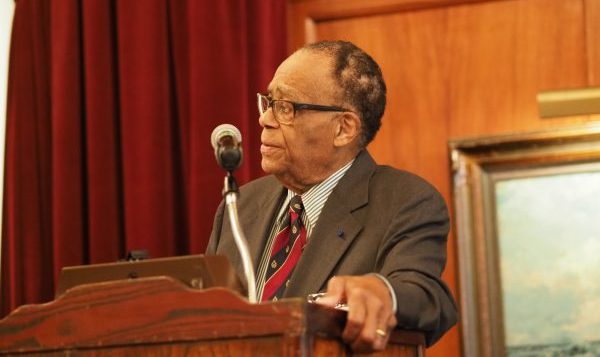Other articles in the September 2018 newsletter:
- President’s Blog: The Path Forward
- Fall Retreat: Gender Violence & Harassment
- The Ins and Outs of Senate Committees
In her opening remarks at the Fall Senate Retreat, Interim President Wanda Austin talked about a new direction and a new vision of shared governance at USC. President Austin declared that a culture must be created where everyone has a voice, where everyone is treated with dignity and made to feel safe and secure, and where this happens routinely. President Austin was followed by Provost Michael Quick, who provided his thoughts on our governance process by stating that some aspects of governance may need to be torn down and then built back up.
After these opening remarks, the session on Shared Governance began with an overview of the current state of shared governance at USC, followed by a discussion of what is possible, and how the shared governance system could be rebuilt to best achieve our mission and goals as the University moves forward.
Paul Rosenbloom (Viterbi/ICT) provided an overview of USC’s current governance system, starting with the participants: the school-level faculty councils, the Academic Senate, the Administration, and the Board of Trustees. He described the selection and operational processes of the Senate and Faculty Councils, along with the level of collaboration and interaction between the Senate and Administration. The Senate uses a committee structure to do much of its work. These include Senate Committees and Joint Provost/Senate Committees, with there also being University Committees with faculty members suggested by the Senate. The reports developed by and conclusions reached by the various committees are advisory only. The Senate has historically had very limited interaction with the Board of Trustees.
Next, John Slaughter (Rossier/Viterbi) shared his experiences and insights as the former President of Occidental College, a small liberal arts university, and as a high-level administrator at two large, public institutions: Washington State University and the University of Maryland. He noted that the L.A. Times described USC’s processes as “secretive”. He opined that a secretive shared governance model in today’s social media environment is counterproductive and cannot be achieved or sustained. He also described what he calls the “serial model of shared governance.” In that model, decisions and consensuses are built on one level and then passed up to the next level, where they are considered before final decisions are made at the highest level. Slaughter contrasted this shared governance process with a more collaborative model, in which all stakeholders have an opportunity to participate and have a meaningful voice in all decisions made. While more time consuming, Slaughter advised that this kind of collaborative and inclusive process provides perspectives that will produce more effective results and buy-in on decisions made. Slaughter closed his comments by citing a sense of urgency that USC must address these shared governance issues now and encouraged USC to be a model for other schools.
Greg Thalmann (Dornsife) closed the session by presenting discussion points developed by the Senate’s Task Force on Shared Governance that would enhance shared governance at USC by creating a more collaborative process. The goal of the new shared governance model would be to break down barriers and address the current ‘top-down’ governance structure by promoting and elevating the voice of faculty and developing a more collaborative process with the Board of Trustees and Administration. In their discussions,, the Task Force is considering shared governance at three levels: the Board of Trustees level, the University / Senate level, and the School / Faculty Council level. They are discussing a model that would include faculty representation on the Board of Trustees and on a number of the Board’s Committees. In addition, the Task Force is discussing ways to enhance Faculty participation on University-level committees. The level of faculty representation would be based on the nexus between academic issues, the expertise provided by faculty, and the charge of the committee (including its overlap with faculty concerns).
Thalmann also discussed how Faculty Councils could be strengthened at the school level. Examples include developing equitable election procedures, providing access to school budget information, and strengthening the connection between the Academic Senate and the Faculty Councils.
To discuss, please go to our Facebook post.
Thank you,
Ruben Davila
Academic Senate Administrative Vice President
Clinical Professor, Leventhal School of Accounting
Marshall School of Business


